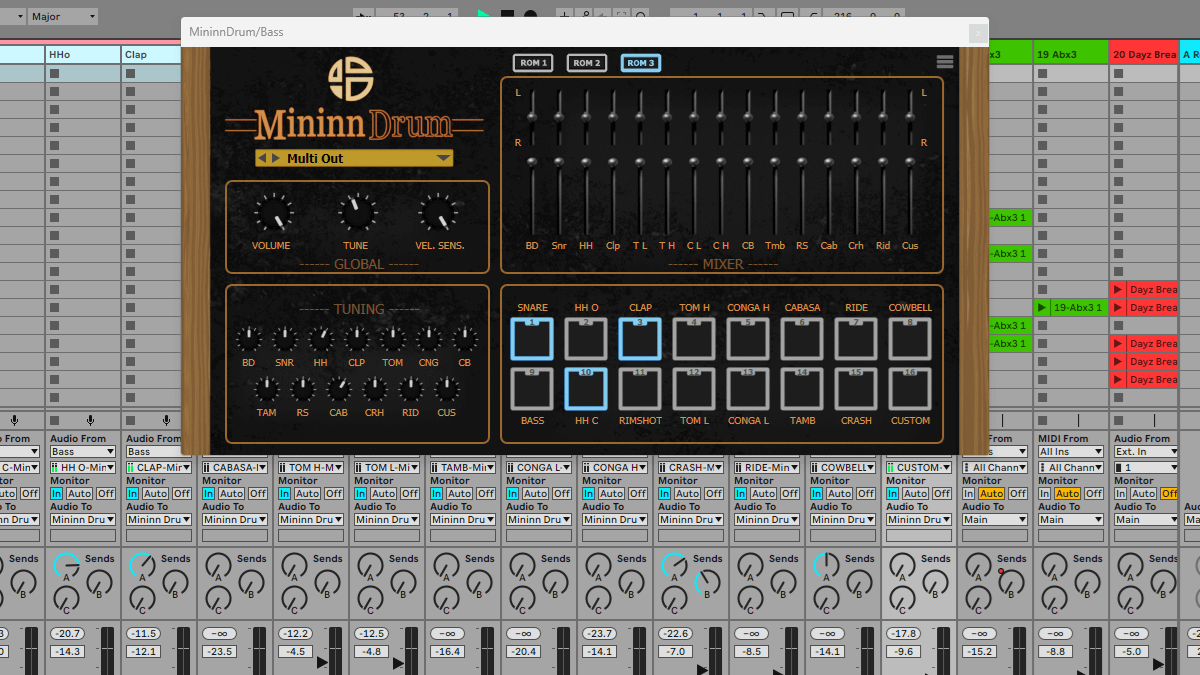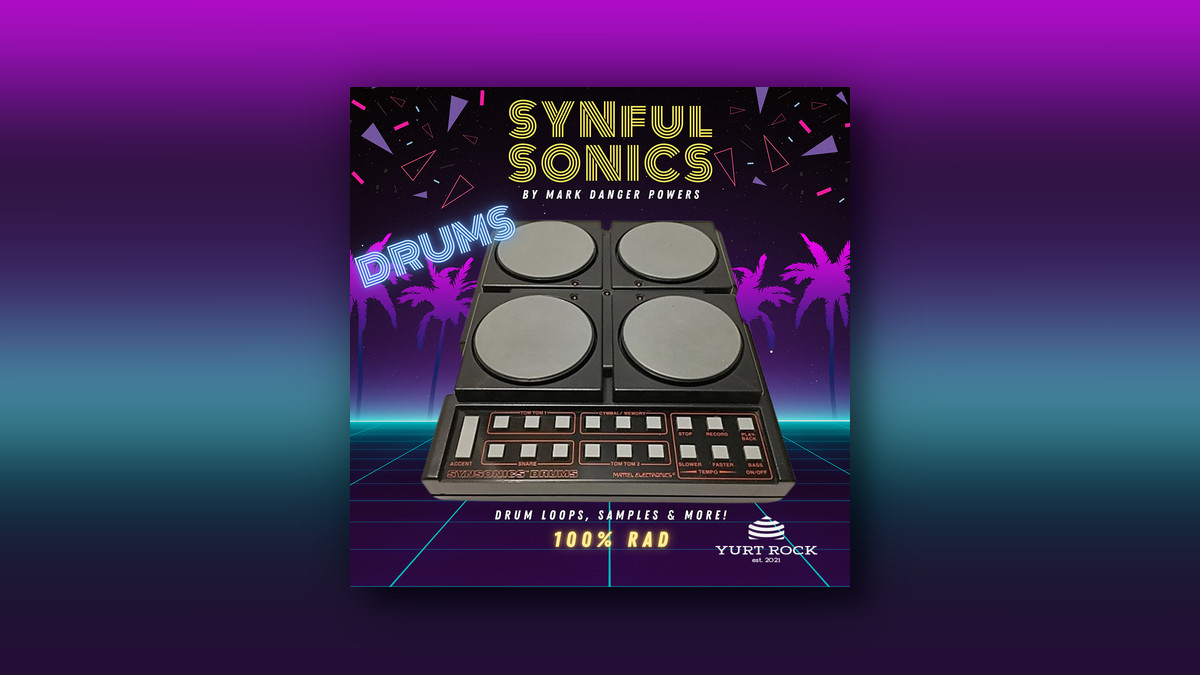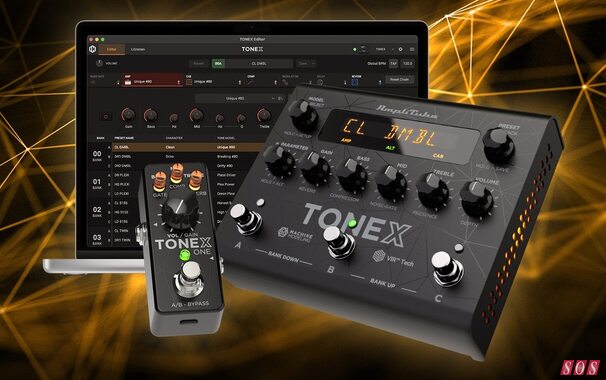This Weekend’s Deals From 4Pockets
Save on various 4Pockets apps in this weekend’s round of price drops. Helium Helium is a lightweight AUv3 MIDI sequencer plugin designed specifically for AUM. It supports up to 16 tracks of unlimited length with the ability to direct output to 16 channels on up to 16 MIDI output ports. One of the great features…
The post This Weekend’s Deals From 4Pockets appeared first on The Beat Community.
https://thebeatcommunity.com/
Save on various 4Pockets apps in this weekend’s round of price drops.
- Helium MIDI Editor – $12.99 to $8.99
- StringLab – $14.99 to $9.99
- DigiStix 2 – $14.99 to $9.99
- Euclidean Sequencer – $12.99 to $8.99
Helium
Helium is a lightweight AUv3 MIDI sequencer plugin designed specifically for AUM. It supports up to 16 tracks of unlimited length with the ability to direct output to 16 channels on up to 16 MIDI output ports.
One of the great features is the ability to import and maintain libraries of MIDI clips using Helium’s ‘Media Bay’. These clips are freely available all over the internet and may contain individual chord sets, chord progressions or drum tracks. You can quickly build a song by dragging and dropping your MIDI clips from the media bay onto your timeline. You can also save your own clips directly to the media bay to create your own personal MIDI clips libraries. Long press on a clip to preview its contents using the currently selected MIDI device.
Helium now ships with a library of over 7000 MIDI clips, consisting of every chord and chord progression you could ever need.
Helium allows many different ways to import additional MIDI clip libraries. Simply drag and drop your ZIP collections directly to your PC/MAC web browser and they are automatically unpacked into the clips library folder. You can also drag and drop files between the Media Bay and the iOS Files app.
Helium supports a sync mode called ‘Remote Looping’. This was something we recently introduced into our MultiTrack Recorder plugin and is very useful for breaking down the timeline into sections. You can define up to 12 loops which can be used to specify the locations of say the intro, verse, chorus, and outro within your song, then trigger these loops seemlessly in sync with the host tempo. Once captured, these loops can then be triggered by incoming MIDI notes.
A new addition to Helium is the ability to piece together loops into songs, so you just concentrate on creating a single verse, chorus, bridge etc. and piece everything together without the headache of having to re-arrange your timeline.
StringLab
StringLab is a physical string modeling synthesizer based on Karplus-Strong theory. It is capable of reproducing the sounds of many different types of instruments, but is especially useful in the reproduction of hammered or plucked strings and other types of percussive instruments.
It works by passing carefully crafted waveforms and short bursts of white noise through a series of tuned delay lines. The delay lines have an internal feedback loop with a series of filters to mimic the natural decay of harmonics found in a real instrument. StringLab allows you to discover the character of real-world accoustics, exploring the physics of how materials interact. Many new and original textures are born out of experimenting with the settings, so don’t be afraid to experiment and create your own unique and dynamic instruments.
DigiStix 2
This new version of DigiStix brings some distinct advantages over its predecessor, most notably the ability to host up to 64 samples per drumkit with 5 layers per pad. The interface has been drastically redesigned for iPad to make better use of full screen mode, allowing a popular MPC style 4×4 pad layout with 4 banks of samples. Digistix 2 also allows greater control over the multi-sample layers, with the ability to individually control the volume levels and pitch of layers as well as global pitch and tune settings all from the new sample window.
Previously, each pad had effect sends for the internal reverb and delay effects, but this can now be routed to external busses 9 and 10 for processing using external effects.
The controller editing is now build into the main display and can be edited in place without the need to scroll the interface. It also now supports extra effect controllers. A new context aware control window allows you to quickly change pad settings without the need for popup windows.
DigiStix 2 now supports GM and original DS drum kit layouts, and includes a sophisticated multi-layer Auto Sampler, capable of recording new GM compatible drumkits automatically from your hardware. It is 100% backward compatible with the original app, and can be used as a drop-in replacement.
Drag and drop support now allows you to directly drop samples on specific layers, as well as preview and edit them directly. You can create new kits by simply combining banks from existing kits into one mega kit, or use our non destructive referencing to include sounds from other kits.
The randomize feature has been enhanced so you can randomize individual instruments or within specific banks. The new continuous MIDI learn mode makes custom mapping a breeze.
Patterns can also be exported as MIDI stems for use in other packages including a direct import to Helium clips. You can also export patterns as audio in the latest version.
The auto sample feature allows automated recording of GM compatible kits directly from hardware drum machines. The slice editor can also be used for MPC style slicing of audio clips.
Euclidean Sequencer
Euclidean Sequencer is an alternative incarnation of the classic step sequencer that has become very popular in the modular realm. It is based on Euclidean rhythms developed by computer scientist Godfried Toussaint in 2004. Euclidean rhythms have their roots in Greek mathematician Euclid’s algorithm, which involves using the greatest common divisor of two numbers to place hits in a sequence as evenly as possible across a set timing divisions.
In practice this is actually simpler than you might think, and Euclidean Sequencer is a great way to auto generate complex musical sequences with no prior knowledge of how it actually works.
Euclidean Sequencer is an AUv3 plugin that can be loaded inside any popular host application that has flexible MIDI routing.
You can define up to 4 Euclidean rhythm parts, each part is referred to as a band. The bands are labelled A-D and colour coded RED, ORANGE, GREEN and CYAN. Together these 4 bands create a pattern, and you can create up to 16 seperate patterns per song patch.
Since each band can specify its own note sequence and output MIDI channel, you can create some quite sophisticated rythms patterns, driving 4 seperate instruments at once. Even better you can seamlessly switch patterns to create even longer evolving sequences. Patterns follow a specified key, scale, or defined chord.
You can even use MIDI input to automatically make note sequences conform to the currently playing chords.
For more information on these and other 4Pockets apps, click here:
NOTE: Some of the links you click on may be affiliated. Clicking and purchasing using these links helps support and fund The Beat Community. Thanks for your support.
The post This Weekend’s Deals From 4Pockets appeared first on The Beat Community.
This is a syndicated post. To read more, click the source link above.







